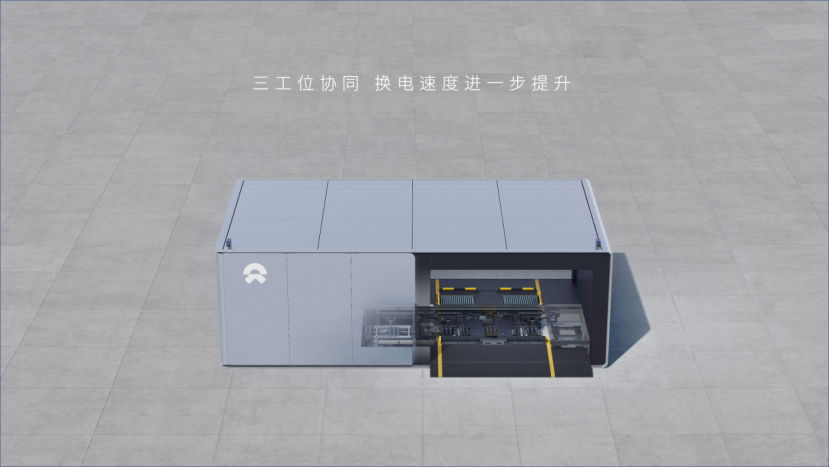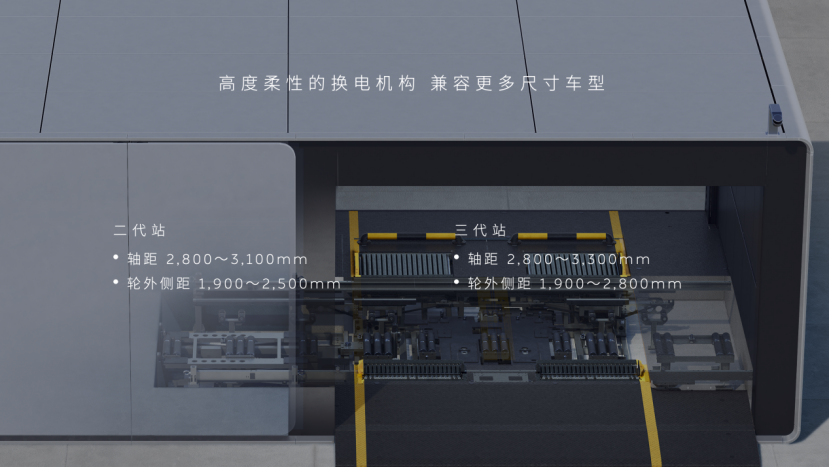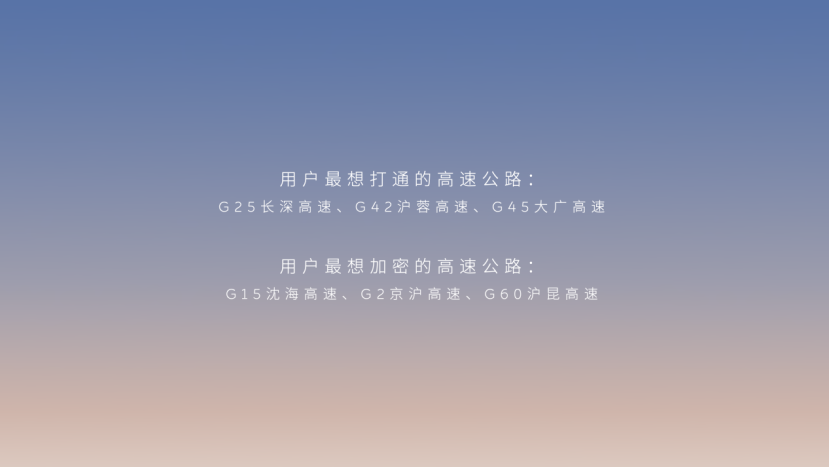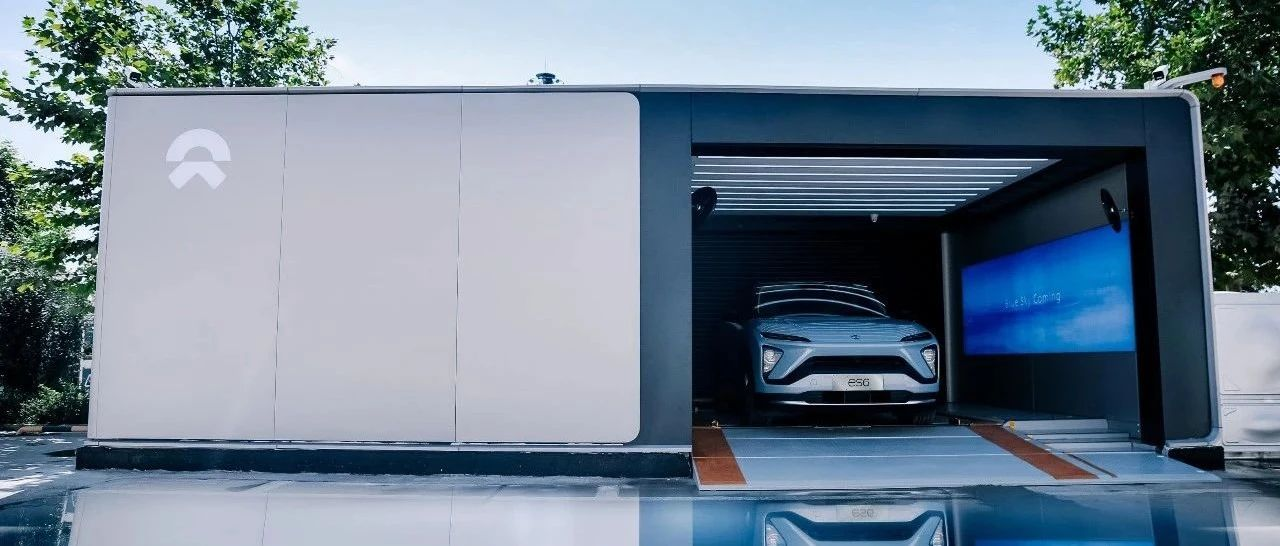NIO Launched the Third-generation Battery Swap Station: Better Efficiency and User Experience
Author: Zhang Ruichen
Editor: Pan Tan
At 10 am on March 28th, William Li, founder, chairman, and CEO of NIO, and Shen Fei, senior vice president of NIO Energy, unveiled the first third-generation battery swap station at the Shangri-La Hotel in Haikou. The station is expected to complete final testing in April and be officially delivered to users. According to a media communication meeting held last week, there will be nine more third-generation battery swap stations in other 9 cities across the country.
Looking back on the development of NIO’s battery swap station, from the first-generation station in Nanshan, Shenzhen in 2015, to the second-generation station at the China Petroleum Chao Ying Station in Beijing in 2021, and now to the soon-to-be-delivered third-generation station, as of March 15, 2023, NIO has deployed 1,322 battery swap stations nationwide, including 351 on highways, 2,388 charging stations, 14,074 charging piles, and connected to over 660,000 third-party charging piles. In terms of user penetration rate, 80% of users have used battery swapping.
According to Shen Fei, the third-generation battery swap station brought by NIO this time has a comprehensive improvement in user experience and work efficiency compared with the second-generation. Let us take a look at the upgrades from both user and efficiency perspectives.
User-oriented Perspective
First of all, the height of the third-generation battery swap station’s platform is about 100 millimeters lower than that of the second-generation, making it easier for users to enter and exit the swap compartment. Secondly, the vehicle’s position during battery swapping has moved forward 400 millimeters, adding to the driver’s visibility. Finally, the battery swap time of the third-generation station has been reduced by about one minute compared to the second-generation, improving the efficiency of battery swapping for users.
The swapping speed of NIO’s third-generation battery swapping station can be increased by nearly a minute. On the one hand, the speed is improved in terms of parking and battery swapping time. On the other hand, the third-generation battery swapping station adopts a three-position collaborative job mechanism, which minimizes the circulation path of the battery and shortens the swapping time.

In terms of work efficiency
Firstly, the adaptability of NIO’s third-generation battery swapping station is stronger than that of the second-generation. The third-generation battery swapping station has a highly flexible swapping mechanism, compatible with multiple-sized car models, such as Alpine and different platforms of NIO brand. Secondly, the internal battery compartment structure of the third-generation battery swapping station has also been improved, and the number of battery compartments has increased from the original 13 to 21. The last point is that the charging power of the third-generation battery swapping station has increased by 50% and can simultaneously be compatible with 800V electrical architecture.

NIO’s third-generation battery swapping station will be equipped with 2 laser radars and 2 NVIDIA Orin X chips, and the computing power of a single station can reach 508TOPS, achieving functions such as vehicle summoning and automatic battery swapping. Moreover, this third-generation battery swapping station adopts the world’s first self-developed HPC bidirectional high-power liquid-cooled power module by NIO, with a maximum efficiency of 98% and a charging and discharging power of 62.5kW, which greatly improves the charging and discharging efficiency of batteries inside the swapping station, making it more energy-efficient and environmentally friendly.
500kW Fast Charging

NIO’s 500kW fast charging pile can be flexibly combined with the third-generation battery swapping station to form an integrated charging and swapping station. In combination with 4-20 charging piles, it is adapted to different scenarios. The 500kW fast charging pile adopts a ring-like double C design and is equipped with a LOGO light and a 15.6-inch LCD display, which can display charging information and facilitate night use. The peak current of the 500kW fast charging pile can reach 660A, with a wide voltage platform of 200-1000V. In terms of intelligent interaction, it can implement NFC card payment, plug-and-charge, and parking management.According to the official announcement, the 500kW super fast charging station is open to all EV owners. NIO states that it takes only 20 minutes for a 400V vehicle and 12 minutes for an 800V vehicle to charge from 10% to 80%. Additionally, NIO’s self-developed ultra-light liquid-cooled charging gun line is adopted, which weighs less than half of the traditional charging gun line, making it easy to operate with one hand. Furthermore, the intelligent temperature control can increase the cooling capacity by 380%, providing better charging protection.
Grid Interaction
After installing numerous batteries in battery swap stations, the best choice for grid interaction is to participate in grid frequency and services, and to provide grid stability. In 2022, NIO has already connected all 72 battery swap stations in Zhejiang to grid scheduling as a virtual power plant to observe the regulatory effect of grid interaction. In 2023, NIO will also test grid interaction in battery swap stations in Europe.
In addition to ride-hailing services, more than 80% of EVs are stationary every day. Thus, as long as the network or power generation companies provide some assistance and users participate in grid interaction, they can adjust the charging volume in real-time to provide feedback to the grid. In this way, it can help the entire grid and contribute to establishing a greener energy society, achieving China’s dual-carbon goals.
Progress and Outlook on Energy Supplementary System
Shen Fei, the NIO CFO, stated that NIO will add 1,000 new battery swap stations this year, including 400 in high-speed areas and 600 in urban areas, increasing the total number to over 2,300. Recently, NIO has launched a user wishlist campaign, receiving 138,701 battery swap station requests. However, NIO states that it may not be able to satisfy 100% of all requests but will try to improve as much as possible.
The highways that users most want to connect to in terms of high speed are G25 Changshen High Speed, G42 Hulun High Speed, and G45 Daguan High Speed, and the busiest lines during the Spring Festival that users hope will be improved.

In addition, NIO held a media communication meeting last week, and after the meeting, NIO launched a classic Q&A session. Here are some of them to share with you:
Question: The price of battery-grade lithium carbonate has decreased. Is it a big advantage for cost? Is it lower than the cost of a 120 kW charging pile?
Shen Fei: The cost of each battery compartment and each battery replacement will definitely decrease rapidly, but it is not of great significance to compare the total cost of individual batteries. Comparing the total cost is not very meaningful, but we will definitely continue to optimize the cost. Compared with a single pile and a single station, the pile will certainly be much cheaper. Moreover, they are not at the same level. The battery swapping station requires more personnel investment and supervision. With the introduction of fully automated and unmanned battery swapping this year, the overall operating cost is also being greatly optimized, and the comprehensive competitiveness of battery swapping should be far superior to that of charging.
Question: Are there any policy incentives for the expected construction of 1,000 battery swapping stations by NIO this year? Will there be any obstacles?
A2:Shen Fei: The specific number of stations that can be built mainly depends on how many cars can be sold synchronously. The more users there are, the more battery swapping stations need to be built. After observing the data of each day, it is found that there are indeed many places lacking battery swapping stations, and there were unexpected problems with battery swapping during the Spring Festival. As a car company that considers the interests of users, we are capable of building more stations.
Question: What is the proportion of third-generation stations among the 1,000 new stations this year?
Shen Fei: There will be a few second-generation stations that have not been completed before March 28. After that, all new stations will be third-generation stations, at least 90%. Each battery swapping station will be built in the place where it can bring the greatest value to users and provide a better experience.Question: What is the optimal user coverage for a charging station? Will second generation stations be upgraded to third generation?
Shen Fei: Ideally, a charging station should have a coverage ratio of 1:1000. However, the actual situation should be taken into consideration, such as the low utilization rate of high-speed swap stations and the installation ratio of household charging piles. Second generation stations can be upgraded to third generation to be compatible with more vehicle models. However, given the current cost and the fact that second generation stations are fully automated and unmanned, the benefits of upgrading are not significant. As for compatibility with the Alps, it is not urgent to upgrade since the delivery of the Alps will not begin until 2024.
This article is a translation by ChatGPT of a Chinese report from 42HOW. If you have any questions about it, please email bd@42how.com.
